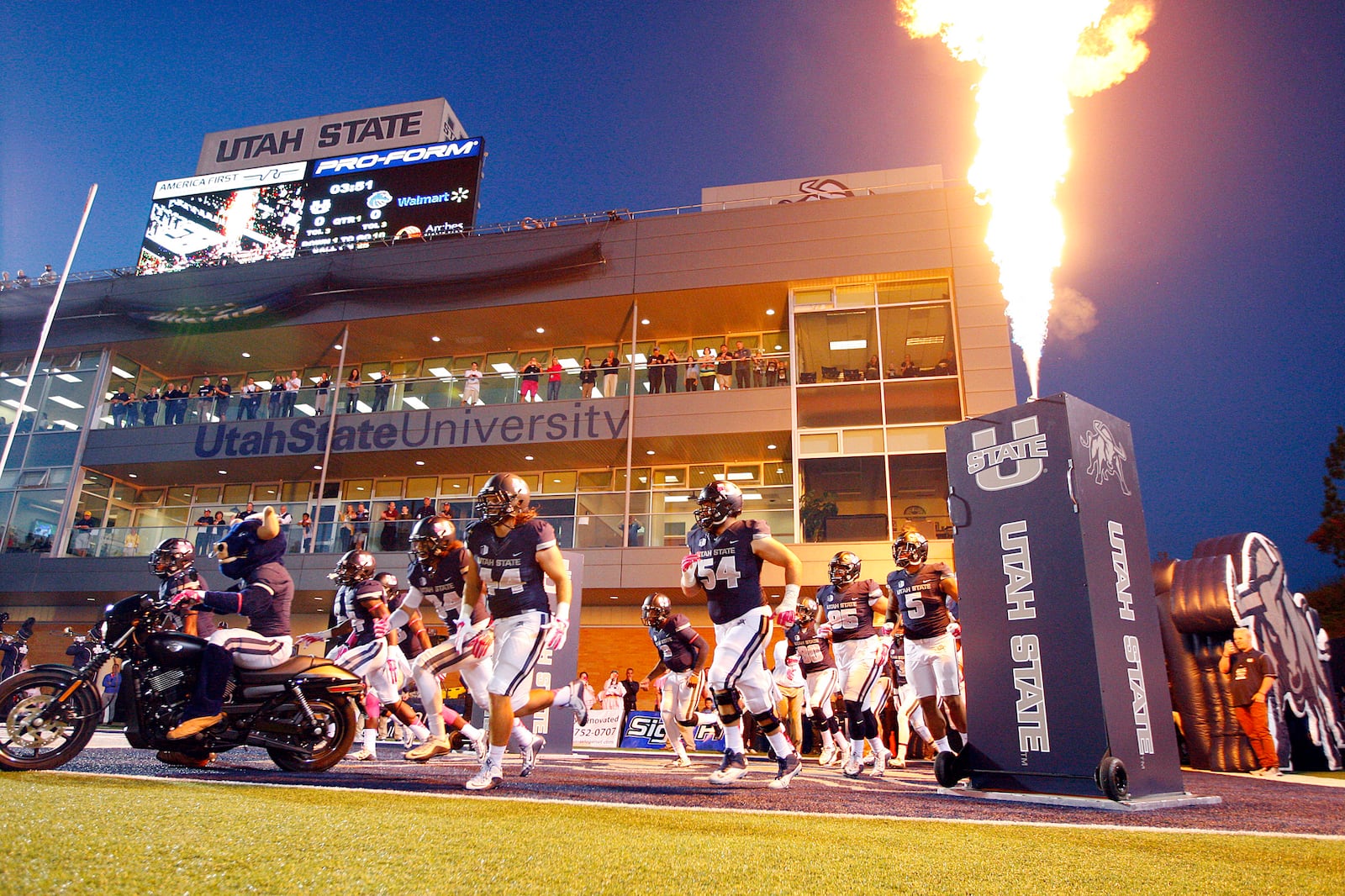LOGAN — Former Utah State head football coach Matt Wells liked to refer to playing road games at Hawaii as going to “The Rock.”
And on the night of Nov. 5, 2011, that certainly seemed appropriate. With Utah State trailing the Rainbow Warriors by three touchdowns at halftime and the team’s starting quarterback on the way to the hospital with a scary neck injury, the Aggies certainly seemed to have a better shot at escaping from Alcatraz than pulling out a victory on the island of Oahu.
But rather than accept another defeat at a location where Utah State last won a game when LBJ was in the White House, the Aggies came out for the second half with the kind of grit and determination not normally seen from a team with a 2-5 record.
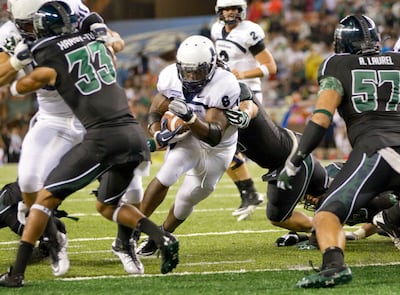
Behind backup quarterback Adam Kennedy and future Super Bowl champs Bobby Wagner and Robert Turbin, Utah State rallied back to shock Hawaii, 35-31. That moment has been viewed since then as the turning point for the Utah State football program by Wells, who was the quarterbacks coach that night, as well as past and current head coach, Gary Andersen, and others closely involved with the Aggies.
“All of a sudden on that magical day, I’ll never forget it,” Andersen recalled during the December 2018 press conference announcing his return to Utah State after a six-year absence. “Down 28-7. Chuckie Keeton gets carried off on a stretcher. In walks Adam Kennedy. The locker room was a place of, ‘Here we go, what’s going on here?’ And we go win that game.
“Why did that all switch on that day? I don’t know.”
The answer, of course, is that it didn’t actually switch in just one day. But even though back-to-back 4-8 records in 2009 and ’10 weren’t all that impressive, during his first two seasons as head coach, Andersen and his staff kept building and refining a new culture in Logan until the players themselves had the confidence to make a stand and complete a comeback. A comeback that, unfortunately, was seen by very few USU fans inasmuch as the game in Honolulu didn’t even start until 10 p.m. Utah time.
“I’m sure there’s going to be some people who stayed up till halftime and closed their eyes and went to sleep,” Andersen noted after the game. “There will be some surprised people at home when they open up the newspaper and see what happens.”
And let’s be honest, the Utah State football program continued to surprise people throughout the 2010s, which could be certainly viewed as the most successful decade in the history of Aggie football.
Although Utah State had better winning percentages in the 1960s (.645), ’20s (.614) and ’70s (.604), the Aggies won 57% of their games in the 2010s, and went to seven bowl games, winning four after previously having won just one bowl game in four tries. But perhaps most impressively, Utah State won 74 games last decade after winning a mere 32 in the 2000s.
The 2011 Utah State team that pulled off the comeback in Hawaii went on to win five straight games before losing to Ohio, 24-23, in the Famous Idaho Potato Bowl, leaving them 7-6 overall and providing the first winning season by the Aggies since 1996. And things only got better in 2012, as a healthy Keeton put together an outstanding sophomore season that culminated in a school-record 11 victories and a 41-15 rout of Toledo in their second straight bowl game in Boise.
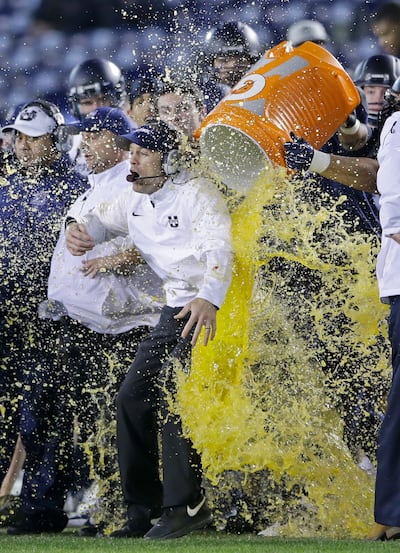
That game would be the final contest of Andersen’s first stint, as well as Utah State’s last game as a member of the WAC. Though Wisconsin managed to hire Andersen away just as the Aggies were making the jump to the Mountain West Conference, then-Utah State athletic director Scott Barnes trusted Wells, a former Aggie quarterback, to keep the program’s momentum going in the right direction.
With the exception of one dismal season, a 3-9 campaign in 2016, Wells proved worthy of that faith at ay crucial time. The Aggies went 9-5 in 2013, finishing first in the Mountain Division before losing to Fresno State in the inaugural Mountain West championship game, and then beating No. 24 Northern Illinois, 24-17, in the Poinsettia Bowl. And while Utah State finished third in its division in 2014, the Aggies still went 10-4 and won the Gildan New Mexico Bowl despite losing three quarterbacks to season-ending injuries and relying on true freshman Kent Myers to lead the offense the entire second half of the season.
The 2015 and ’17 seasons were solid, but less spectacular, and both ended with tough losses in bowl games. But Wells completed the rebuild from the collapse of ’16 in stunning fashion, guiding the Aggies to a first-place finish in the Mountain Division and a 10-2 record before he was lured away to serve as head coach at Texas Tech. USU, led by then-unknown sophomore quarterback Jordan Love, ended up crushing North Texas, 52-13, in the New Mexico Bowl to tie the school record for victories in a season.
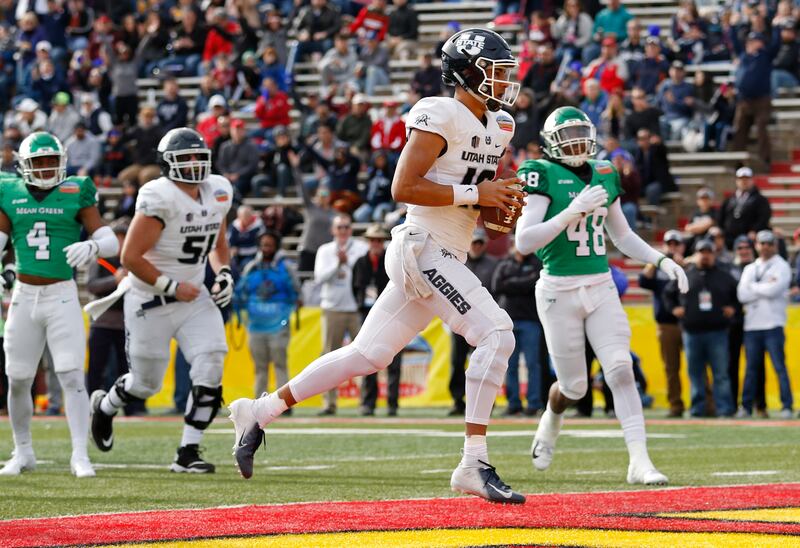
That led to the return of Andersen, who had previously come back to Utah as an assistant on Kyle Whittingham’s staff after short stints as head coach at Wisconsin and Oregon State. In the first year of Andersen’s second stint, Utah State ended up 7-6, including a 51-41 loss to Kent State in the Frisco Bowl that would be USU’s final game of the decade.
Thanks to Andersen’s return, the Aggies managed to get through the 2010s with just two head coaches. Andersen won 29 games during his four seasons, while Wells guided USU to 44 victories in his six seasons at his alma mater.
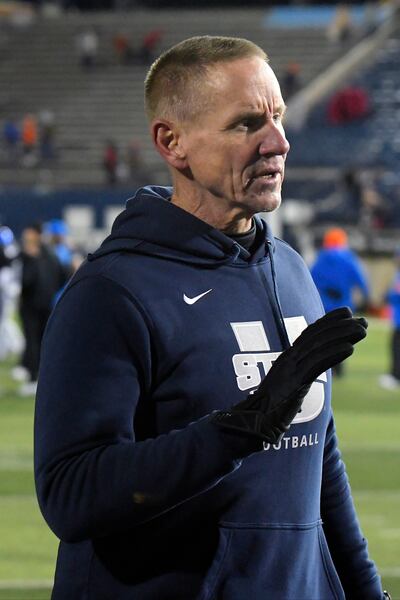
But while there was stability at the top, Utah State’s success in the 2010s also created new challenges, particularly in the coaching staffs. But it’s not just USU coordinators and assistant coaches regularly jumping ship in search of more lucrative opportunities, it’s Aggie players, as well. It’s arguably a good problem to have, but standout athletes like Turbin, linebacker Nick Vigil, tight end Dax Raymond, and, just this offseason, Love and linebacker David Woodward, have left school early to enter the NFL draft.
The list of former Aggies who have spent time in the NFL skyrocketed in the 2010s, with Wagner leading the charge as a likely Hall of Famer as a perennial All-Pro and the leading tackler in the history of the Seattle Seahawks. Maurice Alexander, Will Davis, Marwin Evans, Kyler Fackrell, Tyler Larsen, Nevin Lawson, Patrick Scales, Zach Vigil, Kerwynn Williams and many other USU players from the 2010s have also spent considerable time on NFL rosters.
In addition, a sponsorship deal with the Maverik corporation was announced in April 2015, changing the name of Romney Stadium, which was opened in 1968, to Maverik Stadium. With the help of private donors, as well as the funds from the Maverik contract, Utah State was able construct the West Stadium Center, as well as build a new strength and conditioning center.
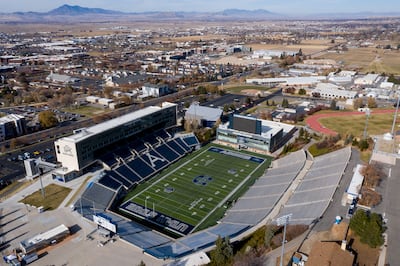
Improved facilities at Utah State have clearly paid a big role in attracting recruits, allowing the Aggies to remain competitive in the Mountain West Conference on a regular basis. But perhaps USU also owes some of its success in the 2010s to a more aesthetic addition: the bronze statue of Merlin Olsen that stands just outside the gates on the south end of Maverik Stadium.
Erected in October 2010 in honor of the Aggie legend who had passed away seven months earlier, that statue has been witness to a decade of revival for a football program that had previously peaked with Olsen’s teams in the early 1960s. So, it’s probably worth noting that the Aggies have only been ranked in the final AP Top 25 poll on three occasions. The first came in 1961 when Utah State finished 10th, while the other two came just last decade, in 2012 (No. 16) and 2018 (No.22).
